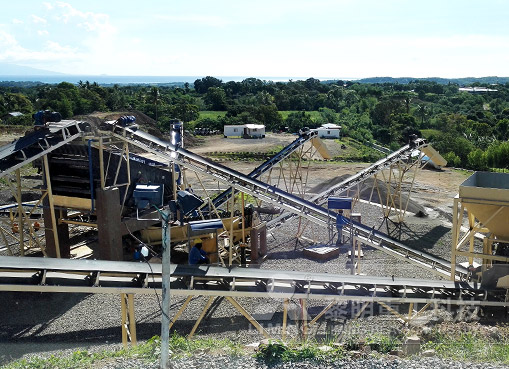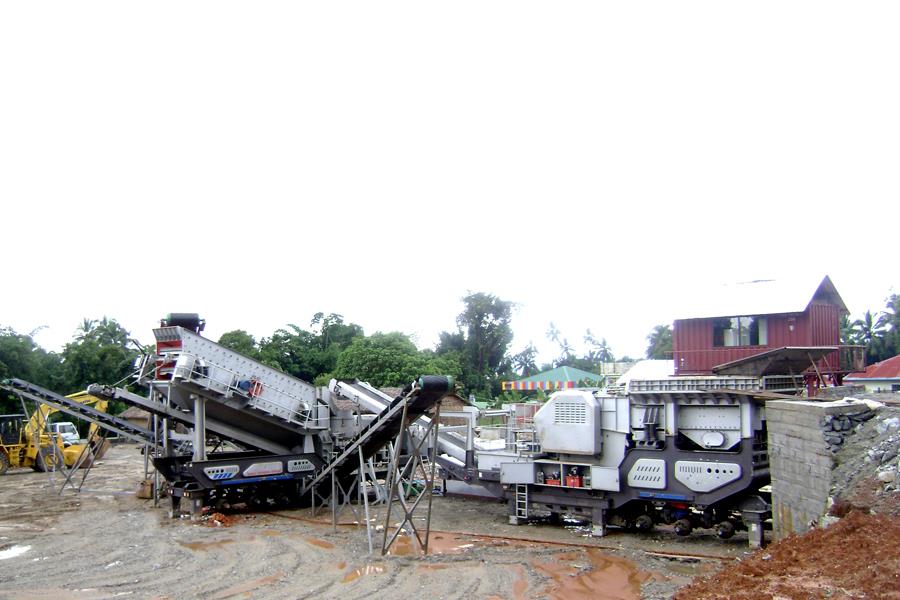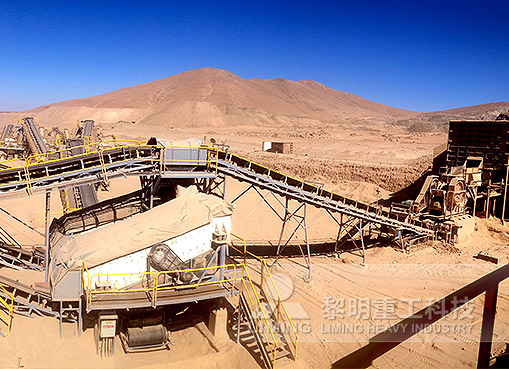

The following points must be met to produce high-standard sand and gravel aggregates: 1. Select appropriate parent rock raw materials. Railway ballast and railway concrete require parent rock raw materials that are higher than those in other industries
The following points must be met to produce high-standard sand and gravel aggregates: 1. Select appropriate parent rock raw materials. Railway ballast and railway concrete require parent rock raw materials that are higher than those in other industries. The quality of the parent rock determines the quality of the sand and gravel aggregate. Shibang Group Crushing/Sand Making/Grinding Consultation Call Now (1) The parent rock raw materials must first meet the requirements of the alkali aggregate test. (2) The parent rock dry density, saturated compressive strength, crushing value index, firmness, moisture content, saturated surface dry water absorption rate and other indicators must be qualified. (3) The content of harmful substances such as sulfide, sulfate, organic matter, light matter, chloride ion and mica must be qualified; (4) The parent rock of the processed sand and gravel aggregate should generally be no less than 90MPa for igneous rock, no less than 80MPa for metamorphic rock, and no less than 60MPa for sedimentary rock. For machine-made sand used to prepare C50 and above concrete, the ratio of the parent rock compressive strength to the concrete strength grade should not be less than 1.5. When processing railway ballast, try to choose volcanic rocks with high compressive strength and high toughness, such as basalt, tuff, and granite;
(5) When using slag as raw material, try to choose secondary or tertiary surrounding rocks with low impurity content such as soil and light materials as parent rock.
(6) Dry sand making must first ensure that the quality of the parent rock meets the basic requirements of soil, moisture, etc.; the slag raw materials must also be tested for changes in the raw materials in a timely manner, sorted, pre-screened, and stored in the field shed to reduce the moisture content of the parent rock raw materials; 2. Select appropriate processing equipment According to the local climate characteristics and parent rock characteristics, try to choose dry processing technology and cost-effective crushing equipment; For processing medium-soft materials such as limestone, impact crushers can be used instead of hammer crushers. This is because the aggregate processed by hammer crushers has a high needle-like content, many dark cracks inside the aggregate, a low crushing value, and a large strength loss value. The highway industry clearly recommends using aggregates processed by impact crushers; 3. Pre-screening before coarse crushing Because the parent rock raw materials are mixed with soil, mountain surface weathered rocks, etc., these impurities with low compressive strength are generally small in size. A combination of bar feed screen and soil removal screen is used before coarse crushing to pre-remove them to improve the quality of the finished sand and gravel aggregate. 4. Choosing the Right Medium and Fine Crushing Equipment

When processing railway ballast or sand and gravel aggregates from hard materials such as basalt and granite, use a multi-cylinder cone crusher with a laminated crushing function for medium and fine crushing to minimize the amount of flakes in the sand and gravel aggregate.
For medium-hard materials such as tuff, medium crushing equipment generally uses a single-cylinder hydraulic cone crusher or a multi-cylinder hydraulic cone crusher.
For fine crushing, a multi-cylinder hydraulic cone crusher generally uses a laminated crushing principle, resulting in fine-grained aggregates with low flake content and minimal voids.
Previous: SMP Crusher
Next: SMP Crusher

The following points must be met to produce high-standard sand and gravel aggregates: 1. Select appropriate parent rock raw materials. Railway ballast and railway concrete require parent rock raw materials that are higher than those in other industries
The following points must be met to produce high-standard sand and gravel aggregates: 1. Select appropriate parent rock raw materials. Railway ballast and railway concrete require parent rock raw materials that are higher than those in other industries. The quality of the parent rock determines the quality of the sand and gravel aggregate. Shibang Group Crushing/Sand Making/Grinding Consultation Call Now (1) The parent rock raw materials must first meet the requirements of the alkali aggregate test. (2) The parent rock dry density, saturated compressive strength, crushing value index, firmness, moisture content, saturated surface dry water absorption rate and other indicators must be qualified. (3) The content of harmful substances such as sulfide, sulfate, organic matter, light matter, chloride ion and mica must be qualified; (4) The parent rock of the processed sand and gravel aggregate should generally be no less than 90MPa for igneous rock, no less than 80MPa for metamorphic rock, and no less than 60MPa for sedimentary rock. For machine-made sand used to prepare C50 and above concrete, the ratio of the parent rock compressive strength to the concrete strength grade should not be less than 1.5. When processing railway ballast, try to choose volcanic rocks with high compressive strength and high toughness, such as basalt, tuff, and granite;
(5) When using slag as raw material, try to choose secondary or tertiary surrounding rocks with low impurity content such as soil and light materials as parent rock.
(6) Dry sand making must first ensure that the quality of the parent rock meets the basic requirements of soil, moisture, etc.; the slag raw materials must also be tested for changes in the raw materials in a timely manner, sorted, pre-screened, and stored in the field shed to reduce the moisture content of the parent rock raw materials; 2. Select appropriate processing equipment According to the local climate characteristics and parent rock characteristics, try to choose dry processing technology and cost-effective crushing equipment; For processing medium-soft materials such as limestone, impact crushers can be used instead of hammer crushers. This is because the aggregate processed by hammer crushers has a high needle-like content, many dark cracks inside the aggregate, a low crushing value, and a large strength loss value. The highway industry clearly recommends using aggregates processed by impact crushers; 3. Pre-screening before coarse crushing Because the parent rock raw materials are mixed with soil, mountain surface weathered rocks, etc., these impurities with low compressive strength are generally small in size. A combination of bar feed screen and soil removal screen is used before coarse crushing to pre-remove them to improve the quality of the finished sand and gravel aggregate. 4. Choosing the Right Medium and Fine Crushing Equipment

When processing railway ballast or sand and gravel aggregates from hard materials such as basalt and granite, use a multi-cylinder cone crusher with a laminated crushing function for medium and fine crushing to minimize the amount of flakes in the sand and gravel aggregate.
For medium-hard materials such as tuff, medium crushing equipment generally uses a single-cylinder hydraulic cone crusher or a multi-cylinder hydraulic cone crusher.
For fine crushing, a multi-cylinder hydraulic cone crusher generally uses a laminated crushing principle, resulting in fine-grained aggregates with low flake content and minimal voids.
Previous: SMP Crusher
Next: SMP Crusher
 Guizhou 500 tons per hour sand and gravel production line Shibang s efficient technology and equipment are perfectly integrated
Guizhou 500 tons per hour sand and gravel production line Shibang s efficient technology and equipment are perfectly integrated Common faults of sand making machine and their treatment measures
Common faults of sand making machine and their treatment measures Fujian 350 tons per hour granite crushing and sand making production line: Shibang equipment creates efficient production line
Fujian 350 tons per hour granite crushing and sand making production line: Shibang equipment creates efficient production line What are the reasons for blockage of equipment in large-scale machine-made sand and gravel production lines
What are the reasons for blockage of equipment in large-scale machine-made sand and gravel production lines What is the difference between sand making machine and cone crusher in producing sand and gravel
What is the difference between sand making machine and cone crusher in producing sand and gravel Guizhou 500 tons per hour sand and gravel production line Shibang s efficient technology and equipment are perfectly integrated
Guizhou 500 tons per hour sand and gravel production line Shibang s efficient technology and equipment are perfectly integrated Common faults of sand making machine and their treatment measures
Common faults of sand making machine and their treatment measures Fujian 350 tons per hour granite crushing and sand making production line: Shibang equipment creates efficient production line
Fujian 350 tons per hour granite crushing and sand making production line: Shibang equipment creates efficient production line What are the reasons for blockage of equipment in large-scale machine-made sand and gravel production lines
What are the reasons for blockage of equipment in large-scale machine-made sand and gravel production lines What is the difference between sand making machine and cone crusher in producing sand and gravel
What is the difference between sand making machine and cone crusher in producing sand and gravel